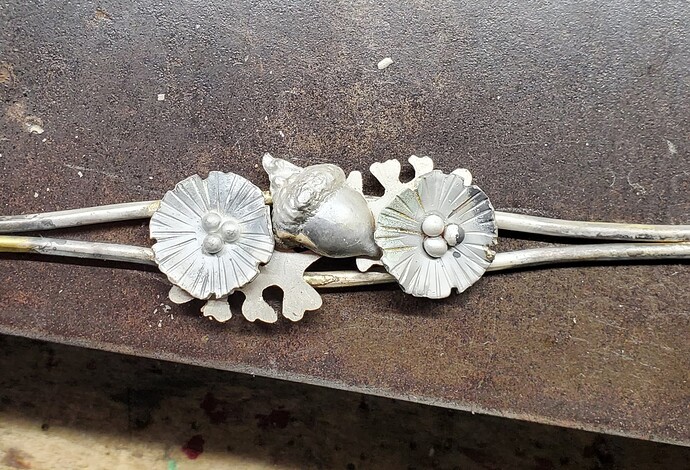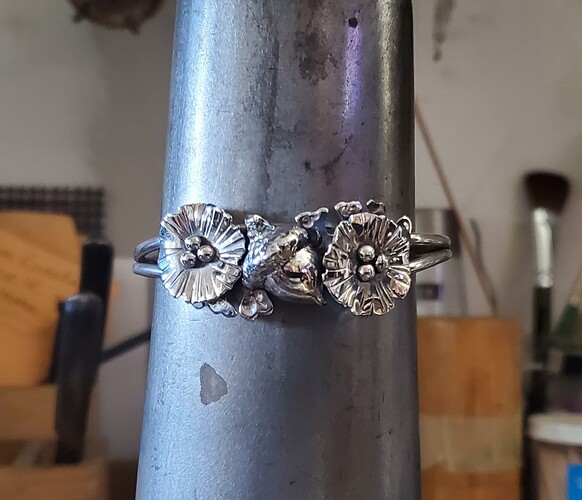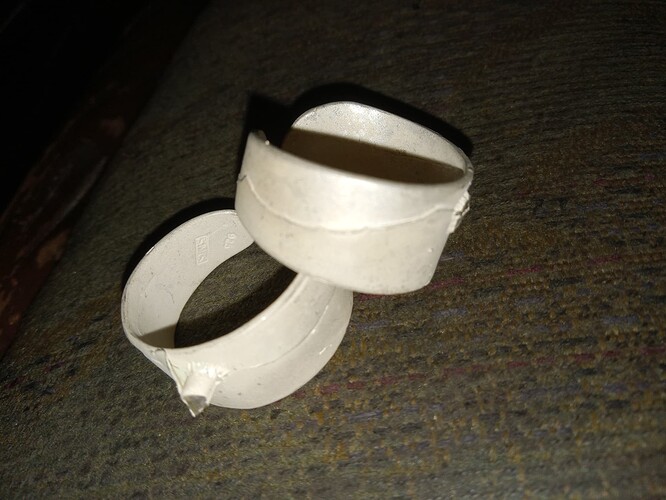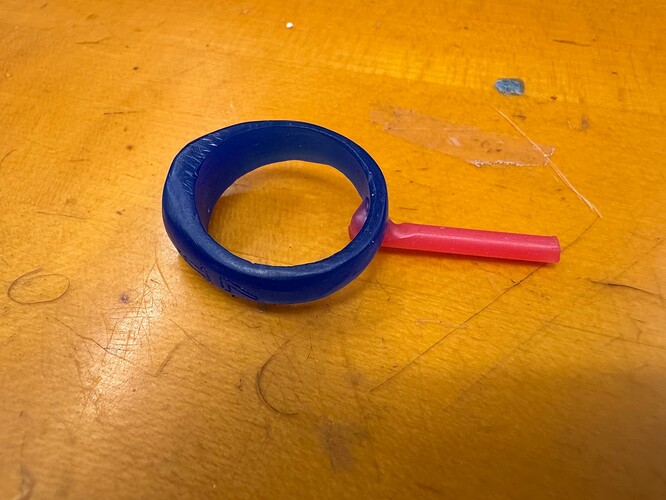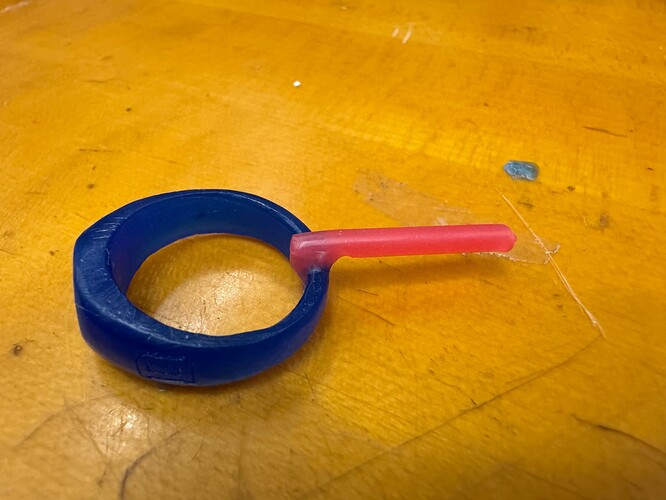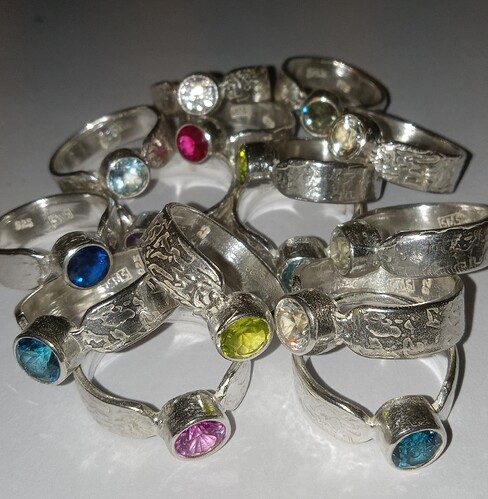I decided to get a few ring bands cast to save time on 4 of my more popular designs, which are very simple. Two are plain open bands, to texture & add stones to later, two are with tube settings. I got 85 total, and it didn’t cost much, since I sent them enough scrap to make all of them. I sent finished pieces, not wax.
I knew it would be a learning curve for me, I’m happy in some ways but it’s not going to save quite as much time as I’d hoped - I have to cut off the last bit of the sprue & then clean that area, which takes time, and there are horizontal lines along some of the bands from the two sides of the mold, so that all needs to get cleaned up as well. I kind of suspected it wouldn’t be quite “set, polish & go”, which would be lovely, but I hadn’t expected I’d have to do quite this much.
I looked at some other companies which do this but picked one close to home. On one website, can’t remember which, I think you could get what I got (unpolished, etc) which is cheaper, or polished which I assumes means the sprue attachment area is cleaned up.
I guess I’m just curious about whether my experience is normal? Should I have expected more? Thanks, Sue
